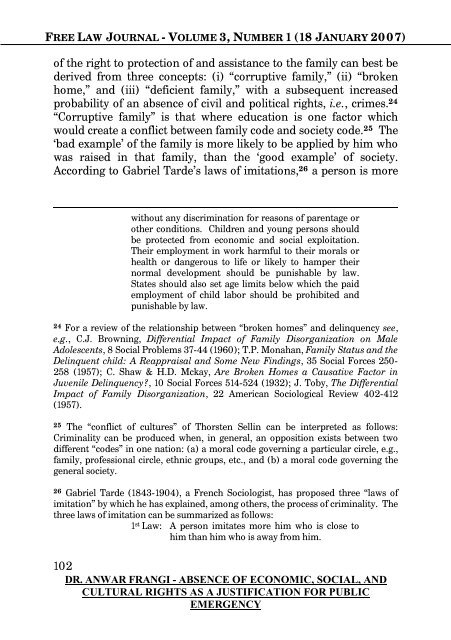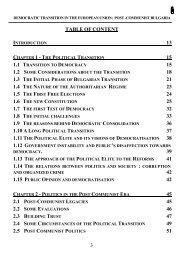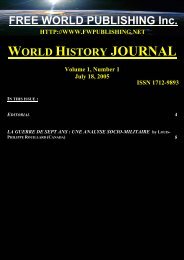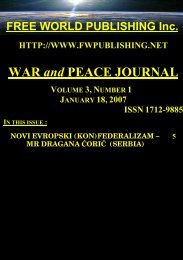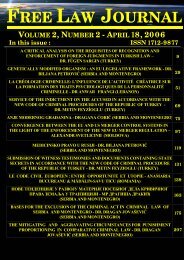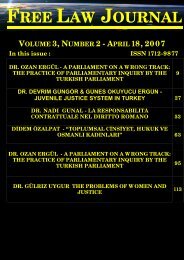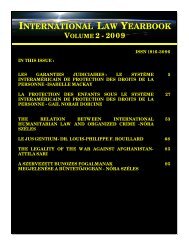free law journal - volume 3, number 1 (18 january 2007)
free law journal - volume 3, number 1 (18 january 2007)
free law journal - volume 3, number 1 (18 january 2007)
Create successful ePaper yourself
Turn your PDF publications into a flip-book with our unique Google optimized e-Paper software.
FREE LAW JOURNAL - VOLUME 3, NUMBER 1 (<strong>18</strong> JANUARY <strong>2007</strong>)of the right to protection of and assistance to the family can best bederived from three concepts: (i) “corruptive family,” (ii) “brokenhome,” and (iii) “deficient family,” with a subsequent increasedprobability of an absence of civil and political rights, i.e., crimes. 24“Corruptive family” is that where education is one factor whichwould create a conflict between family code and society code. 25 The‘bad example’ of the family is more likely to be applied by him whowas raised in that family, than the ‘good example’ of society.According to Gabriel Tarde’s <strong>law</strong>s of imitations, 26 a person is morewithout any discrimination for reasons of parentage orother conditions. Children and young persons shouldbe protected from economic and social exploitation.Their employment in work harmful to their morals orhealth or dangerous to life or likely to hamper theirnormal development should be punishable by <strong>law</strong>.States should also set age limits below which the paidemployment of child labor should be prohibited andpunishable by <strong>law</strong>.24For a review of the relationship between “broken homes” and delinquency see,e.g., C.J. Browning, Differential Impact of Family Disorganization on MaleAdolescents, 8 Social Problems 37-44 (1960); T.P. Monahan, Family Status and theDelinquent child: A Reappraisal and Some New Findings, 35 Social Forces 250-258 (1957); C. Shaw & H.D. Mckay, Are Broken Homes a Causative Factor inJuvenile Delinquency?, 10 Social Forces 514-524 (1932); J. Toby, The DifferentialImpact of Family Disorganization, 22 American Sociological Review 402-412(1957).25The “conflict of cultures” of Thorsten Sellin can be interpreted as follows:Criminality can be produced when, in general, an opposition exists between twodifferent “codes” in one nation: (a) a moral code governing a particular circle, e.g.,family, professional circle, ethnic groups, etc., and (b) a moral code governing thegeneral society.26Gabriel Tarde (<strong>18</strong>43-1904), a French Sociologist, has proposed three “<strong>law</strong>s ofimitation” by which he has explained, among others, the process of criminality. Thethree <strong>law</strong>s of imitation can be summarized as follows:1 st Law: A person imitates more him who is close tohim than him who is away from him.102DR. ANWAR FRANGI - ABSENCE OF ECONOMIC, SOCIAL, ANDCULTURAL RIGHTS AS A JUSTIFICATION FOR PUBLICEMERGENCY


